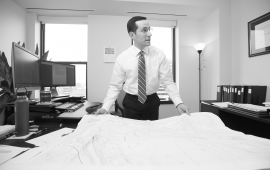High Water Everywhere: Northeast Waters Warmin’ and A Risin’
Researchers at the National Oceanic and Atmospheric Administration (NOAA) and the University of Arizona recently released findings from tidal data collected over a two year period (2009-2010). The central conclusion of the data is this: New England sea levels are rising more rapidly than anticipated.
Although the study most likely represents a peak in data and not a permanent rise, the findings are still being held as significant. The study found that over a two year period, Northeast waters rose on average 3.9 inches with the steepest rise of 5 inches taking place in Casco Bay, off the coast of Portland, Maine. The report attributes the sharp rise to warming ocean temperatures. This conclusion builds upon the initial findings of a more long-term study undertaken by the Gulf of Maine Research Institute. This study indicates that the waters of the Gulf of Maine are warming faster than 99 percent of the world’s oceans. (An informative discussion of the impacts of this trend on both marine life and fisheries can be found here.)
All of these figures come at a time when the Federal government is instituting a suite of new policies aimed at addressing sea level rise.
- In September of 2014, the Federal Emergency Management Agency (FEMA or Agency) released draft guidelines that require state disaster preparedness plans to account for and “assess future risk in light of a changing climate” before plans can yield Agency funding. If the guidance is eventually adopted into regulation, in theory, FEMA could reject state plans that do not consider climate change resulting in withholding millions of dollars in federal funding. The political implications of the guidance are intriguing given that many traditionally right-leaning states are situated in locations prone to natural disasters.
- In January of this year, President Obama also issued an executive order establishing a Federal Flood Risk Management Standard. This standard (inspired by Superstorm Sandy), would be applied when federal funds are used to build, or significantly retrofit or repair, structures and facilities in and around floodplains following a natural disaster. If finalized as a regulation, this standard could have a far-reaching impact. In effect, it seeks to ensure structures are resilient, safer and long-lasting which in turn impact how individuals can—or more importantly, cannot—rebuild following natural disasters.














